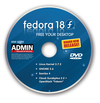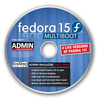« Previous 1 2 3 4 Next »
Fedora 18 as a server distribution
Test Lab
The latest Fedora release had to wait more than two months before it was officially released to compete for users' favor. That Fedora 18 proved to be "extremely buggy" or "completely useless" according to the assessments after the first tests hardly helped improve the situation. However, this criticism relates primarily to desktop use, and in particular to errors in the new Gnome version 3.6.2 and the massively revised Anaconda installer. Under the surface lies a whole series of innovations of interest to ambitious users and administrators.
A Choice of Desktops
From the perspective of admins and developers, Fedora 18 provides interesting prospects, particularly with regard to its use as a server or virtualization and cloud management platform. The rightly criticized deficits for desktop use (the Anaconda installer and Gnome) are less relevant for admins because, on the one hand, Fedora 18 provides enough stable alternatives with KDE SC 4.92, Cinnamon 1.6.7, Xfce 4.10, and MATE, and on the other hand, most server admins can probably do without a graphical interface completely.
Moreover, Fedora 18 is available not only in the standard version as an installable Live CD with the Gnome desktop, but also, as used for this test, in a directly installable DVD variation and in the form of spins for KDE and Xfce. Alternatively, just like KDE and Xfce, the Gnome 3 fork Cinnamon and the Gnome 2 fork MATE can simply be installed from a standard Fedora system with Gnome 3.6.2.
Taming Anaconda
In spite of all the installer's deficiencies, any admin should be able to install Fedora 18 in the desired manner (partitioning) with the new installer, even though available updates cannot be installed during the installation. These features from the old Anaconda could not be integrated in Fedora 18 because of time
...Buy ADMIN Magazine
Subscribe to our ADMIN Newsletters
Subscribe to our Linux Newsletters
Find Linux and Open Source Jobs
Most Popular
Support Our Work
ADMIN content is made possible with support from readers like you. Please consider contributing when you've found an article to be beneficial.






